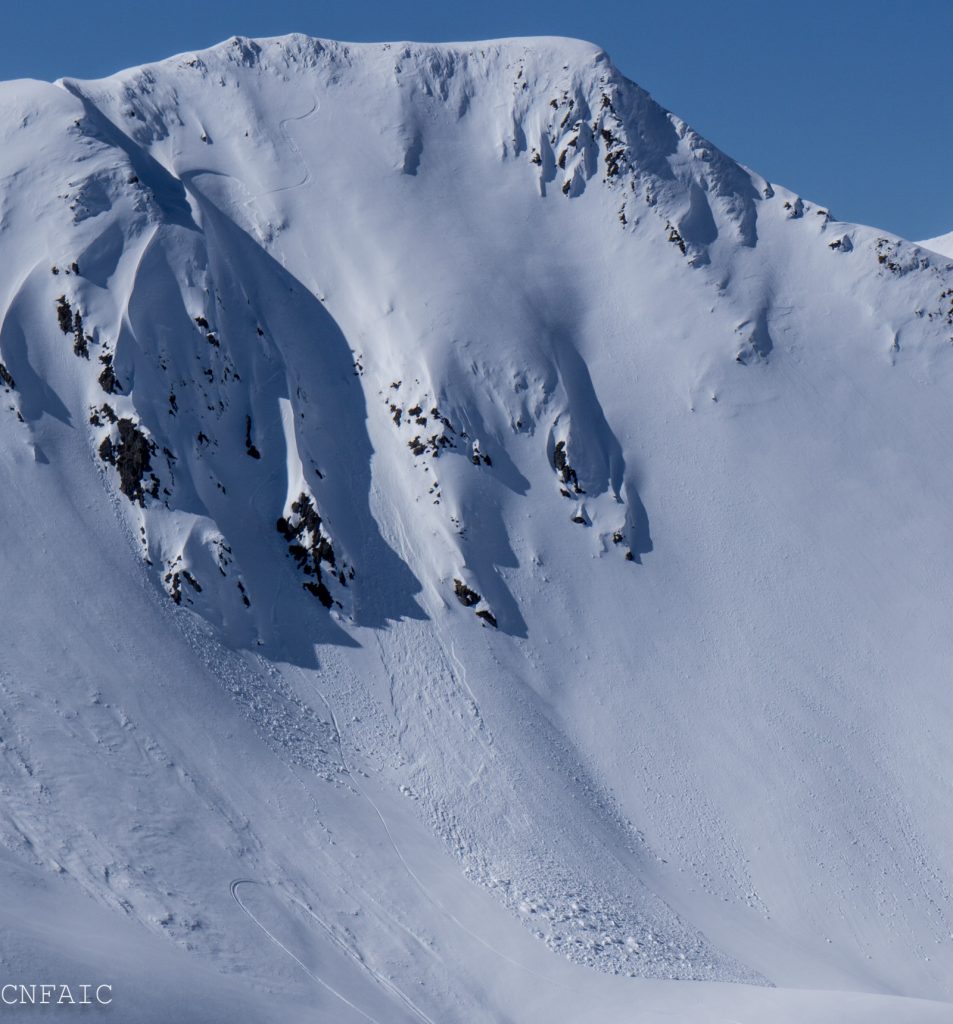Turnagain Pass
|
|
The avalanche danger is MODERATE on slopes above 2,500′. Triggering a slab 1-2′ deep is possible on steep Northern aspects in the alpine. Triggering a wet-loose avalanche is possible with daily warming on steep Southern aspects. Pay attention to surfaces conditions and if you notice the snow becoming wet and unsupportable – transition to firmer surfaces. As always, give cornices a wide berth and limit travel under glide cracks.
PORTAGE VALLEY: Cornice fall and/or avalanches from above have the potential to send debris to valley bottoms and into snow-free zones. Traveling along hiking trails, such as the Byron Glacier Trail with steep slopes overhead is not recommended in the afternoon or on rainy days.
LOST LAKE / SEWARD: Similar to Turnagain, wet loose avalanches on sunny slopes are possible with the heat of the day. Dry slab avalanches could be a concern on high elevation northerly slopes.
WEDNESDAY AVALANCHE OUTLOOK:
No avalanche forecast will be issued tomorrow. Similar avalanche conditions are expected Wednesday, Apr 17th. Overcast skies and scattered rain showers may prevent surfaces from re-freezing overnight. Evaluate surface conditions on all aspects and avoid steep terrain if your skis or machine are sinking into wet snow.
Advisories: For the remainder of April, avalanche advisories will be posted 4 days/week (on Tues, Thur, Sat and Sun). The avalanche center will close for the season on Saturday, April 27th when we will post our springtime tips. Thank you everyone for tuning in!
Please join the US and Canada in a joint survey looking into how to better serve you €“ the users!! We want to hear from all backcountry recreationalists, especially those that are just beginning to use the avalanche forecast. The survey takes about 30 minutes. Survey link: HERE. (Participants will also be entered to win $500, so don’t delay!)


